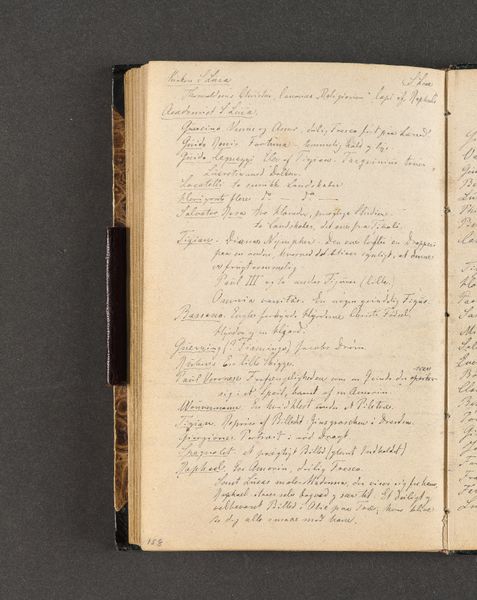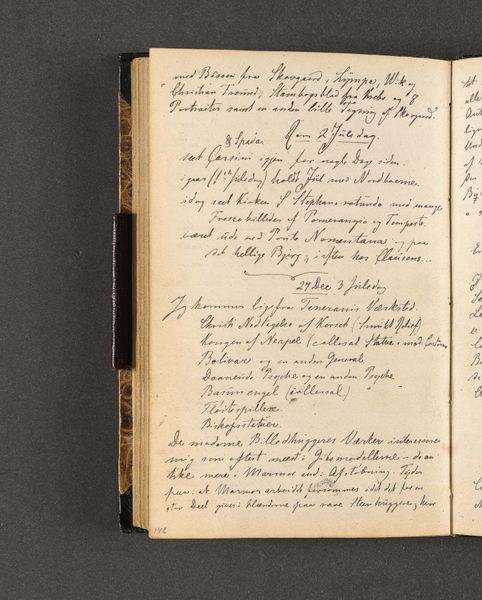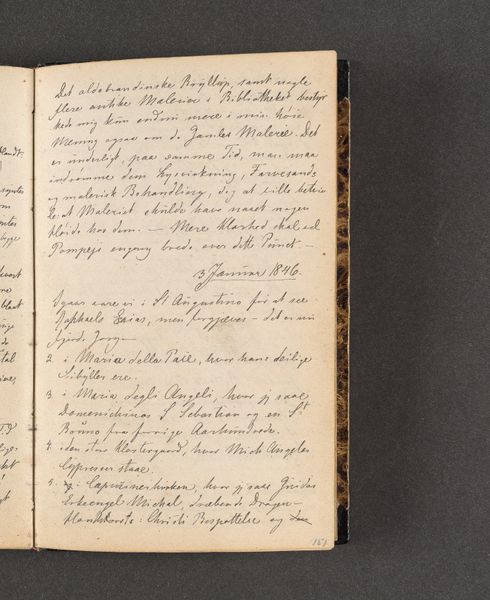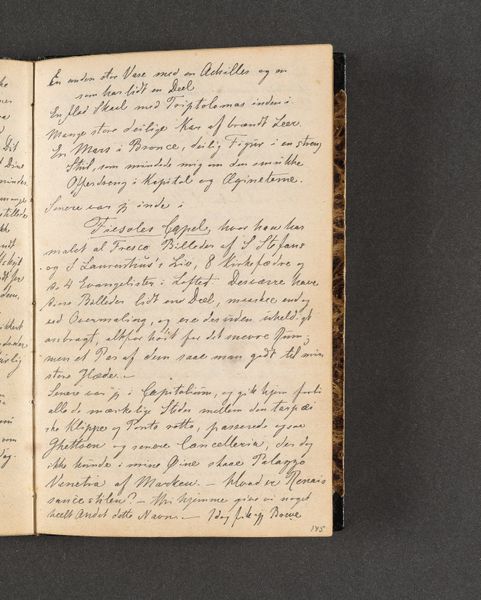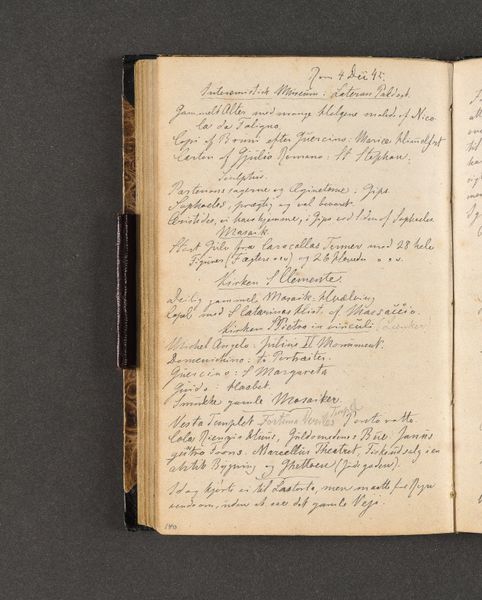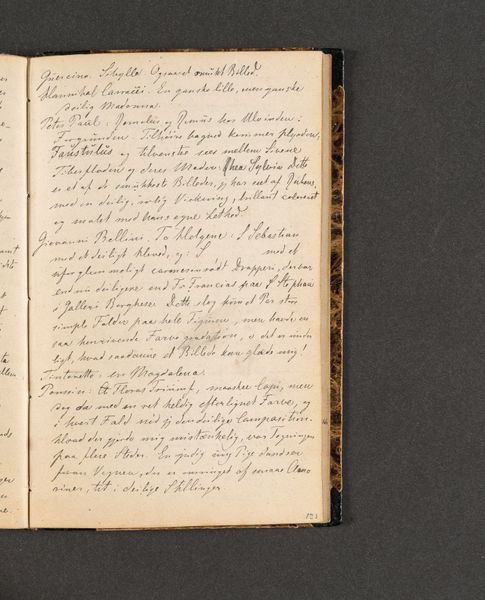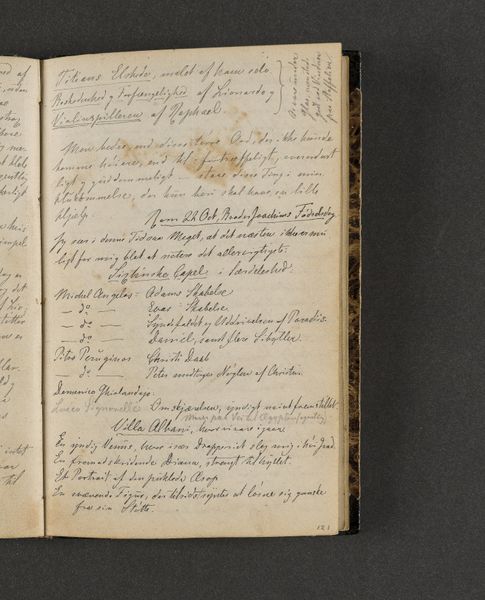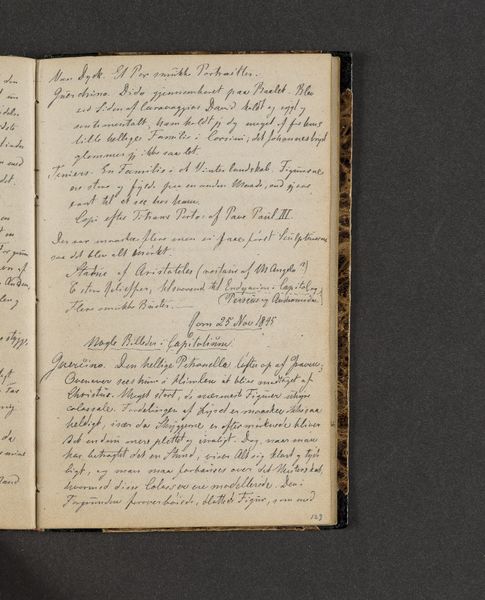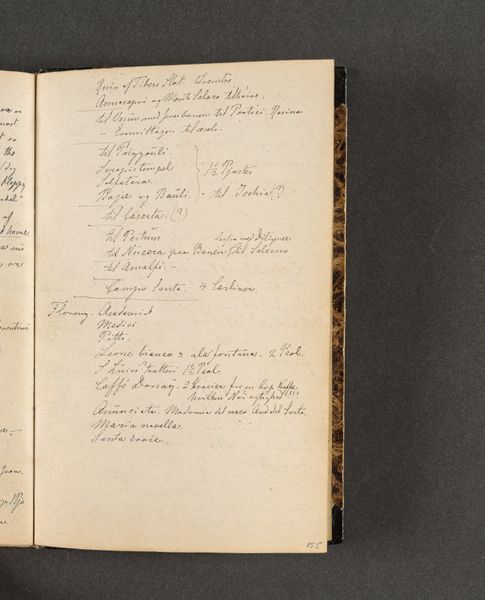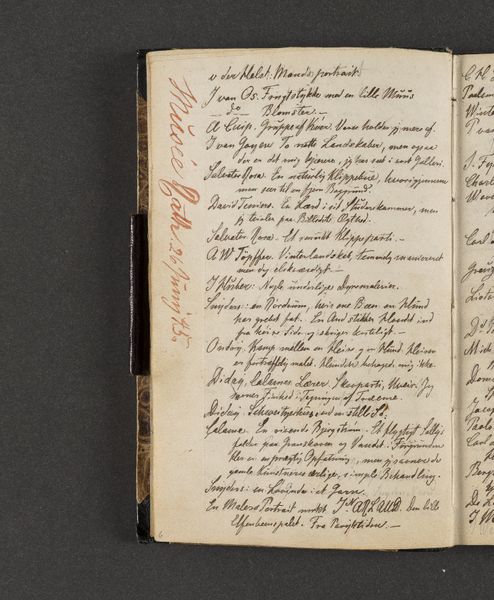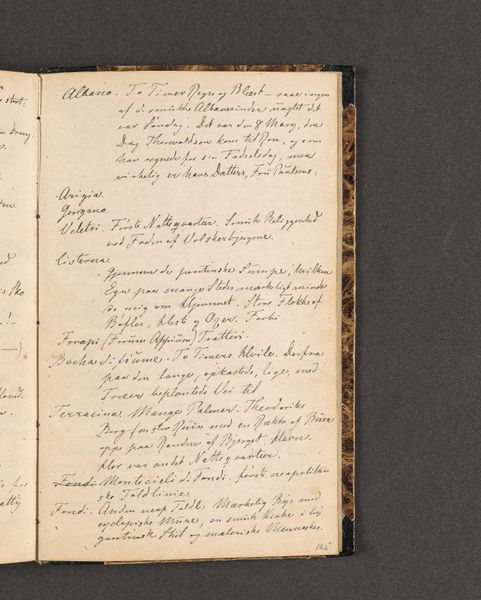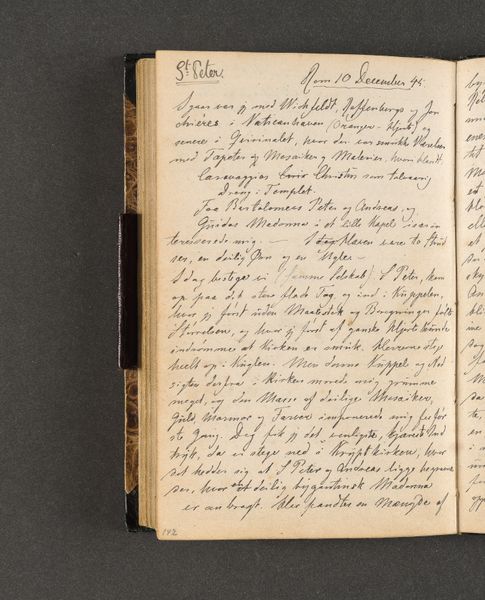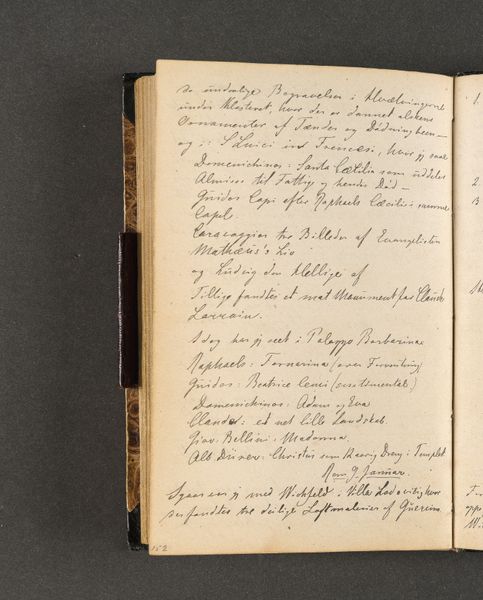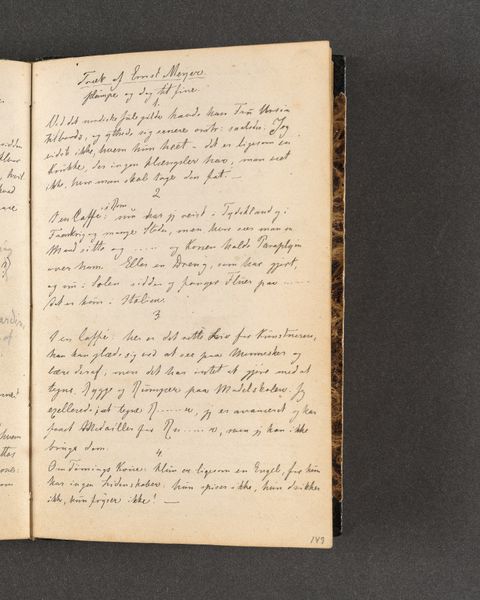
drawing, textile, paper
#
drawing
#
textile
#
paper
#
romanticism
#
calligraphy
Dimensions: 161 mm (height) x 103 mm (width) x 11 mm (depth) (monteringsmaal)
Editor: Here we have Johan Thomas Lundbye's "Rejsedagbog" from 1845, a page from his travel journal, made with drawing, textile, and paper materials. The text seems to flow like a stream of consciousness. How do you interpret this work as a whole? Curator: The page reminds us that travel is not merely physical; it’s a journey of the mind and spirit, meticulously documented through script. Calligraphy itself becomes a potent symbol – not just as language, but as a direct trace of the artist's hand, imbued with the emotional weight of his experiences. Editor: That’s a great point. The flow and forms of the script do create their own landscape on the page. Is there something in the text that grabs you in particular? Curator: Look at the mention of figures: Amoriner, Fama, Minerva, Bacchus… Lundbye evokes these mythological symbols within the seemingly mundane act of travel writing. These archetypes highlight a desire to connect present experiences with the weight of cultural memory and continuity. Doesn't it read like the handwriting is striving to touch these ancient sources? Editor: So, you see the calligraphy acting as a bridge between personal experience and this deeper cultural narrative. Curator: Exactly! What feels deeply personal becomes anchored in something much larger. A lone traveler engaging with echoes from antiquity! What does that contrast stir within you? Editor: It's powerful to think about how seemingly personal writing can open a door to a shared, historical understanding. It makes the everyday feel momentous. Curator: Indeed, and recognizing those layers invites us to explore our own connections to the symbols and stories of the past.
Comments
No comments
Be the first to comment and join the conversation on the ultimate creative platform.
